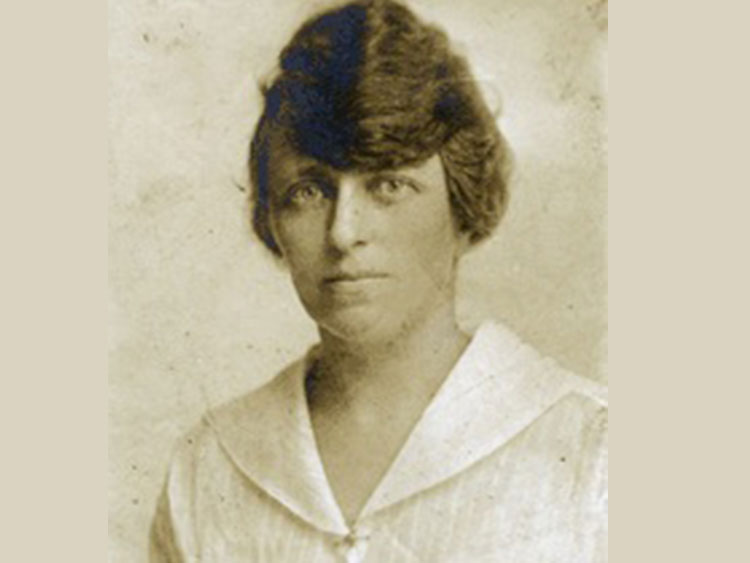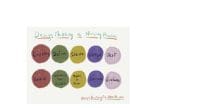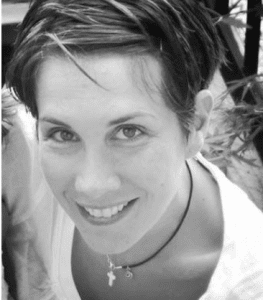

This is week #4 of the 52 week series in this year long study of nurses and midwives. Emma Elizabeth Weaver is this week’s featured nurse.
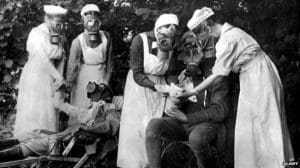

Beginning in June 1918 in some quiet hour, maybe at night or early morning, Emma Elizabeth Weaver would sit down at Base Hospital No 20 in central France and pen her impressions. She wrote about things she had seen, and things she could never un-see. There were the buildings decimated, reduced to heaping “piles of mortar, bricks, and stone” [1]. Whole villages razed and erased and tombstones blown apart, “the dead out of their graves in every direction.”
There were the trenches, deep and muddied, where soldiers had camped out for hours, sometimes days. And then there were the bodies, mangled and burned, shredded and oozing with infection. They came to her at all hours, from places across the globe, the young men naked and writhing in agony. Some she could help, but too many were beyond saving. Despite being one of the best trained, Weaver never imagined the conditions of war and the work she had volunteered to do.
In February 1918, almost, nine months after the United States officially entered World War I, Weaver felt compelled to join the thousands of all white nurses going abroad as medical volunteers–despite the increased need and recruitment, we cannot forget nor ignore that Black nurses were refused entry into the Army and Navy nurse corps, a gross oversight on the part of the US government.**
Some balked at her decision. At 40, she was considered too old—most nurses were between the ages of 25-35—but she ignored the naysayers. Possessing a confidence that younger women didn’t have and guided by 14 years of nursing experience (she graduated from the University of Pennsylvania in 1904) she joined the service. Within days along with 65 other nurses, Weaver had taken the oath allegiance and was preparing to leave for embattled Europe. On a crisp morning, the nurses, some of the best in the country, departed from the Broad Street Station in Philadelphia and headed to their mobilization center at New York’s Ellis Island. Weaver writes about the moment:
Had a wonderful send off. The morale was excellent…A fairly large crowd had collected at [the] station to see us depart & we were given, flowers, fruit [etc.] A special car was engaged for us. On the way to New York we passed a long train of khaki clad raw recruits. We flocked to the windows & there was wild cheering & waving & exchanging of salutes.
But, it would take two more months before the nurses sailed for France.
Works Cited
[1] https://www.armyheritage.org/images/stories/Education_Content/Weaver_on_the_Ruins_of_Europe.pdf
[2] https://www.womensmemorial.org/exhibits/detail/?s=world-war-i-nurses-the-journal-of-emma-elizabeth-weaver
[3] https://www.womensmemorial.org/exhibits/detail/?s=world-war-i-nurses-the-journal-of-emma-elizabeth-weaver
[4] https://www.armyheritage.org/images/stories/Education_Content/Weaver_on_Patients_and_Gas.pdf
*Thumbnail image from WomensMemorial.org
To read the entire profile on Emma, please go here, and stay tuned for next week’s profile. To read past profiles, please visit our My Nurse Influencer page.
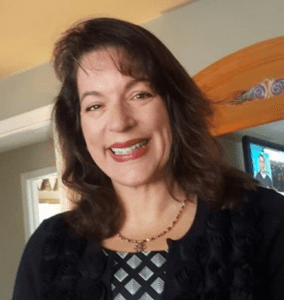

Robin Cogan, MEd, RN, NCSN is a Nationally Certified School Nurse (NCSN), currently in her 19th year as a New Jersey school nurse in the Camden City School District. She serves on several national boards including The American Foundation for Firearm Injury Reduction in Medicine (AFFIRM), a gun violence prevention research non-profit organization and the National Board of Certification for School Nurses (NBCSN). Robin is the Legislative Chair for the New Jersey State School Nurses Association (NJSSNA). She is proud to be a Johnson & Johnson School Health Leadership Fellow and past Program Mentor.
She has been recognized in her home state of New Jersey and nationally for her community-based initiative called “The Community Café: A Conversation That Matters.” Robin is the honored recipient of multiple awards for her work in school nursing and population health. These awards include 2019 National Association of School Nurses (NASN) President’s Award; 2018 NCSN School Nurse of the Year; 2017 Johnson & Johnson School Nurse of the Year; and the New Jersey Department of Health 2017 Population Health Hero Award. Robin serves as faculty in the School Nurse Certificate Program at Rutgers University-Camden School of Nursing, where she teaches the next generation of school nurses. She was presented the 2018 Rutgers University – Camden Chancellor’s Teaching Excellence Award for Part-time Faculty.
Robin writes a weekly blog called The Relentless School Nurse. You can also follow her on Twitter at @RobinCogan.


